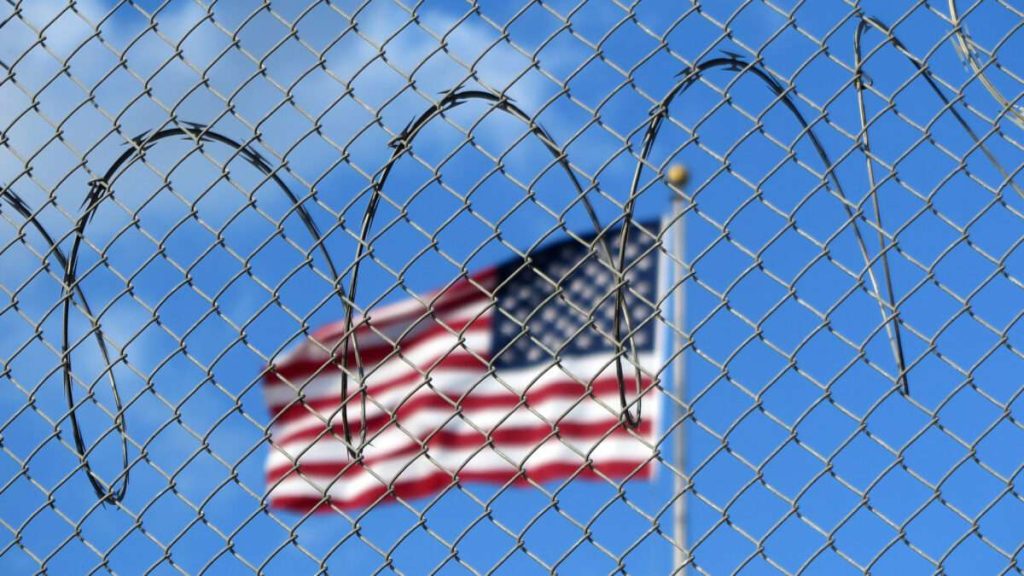The government investigated itself—and you’re not allowed to see the results. On Monday, the U.S. Court of Appeals for the 2nd Circuit ruled that the Freedom of Information Act (FOIA) doesn’t apply to the Senate’s 2012 report on CIA torture programs. The decision blocks off an avenue to find out what’s in the 6,700-page paper, which the CIA has fought to keep under wraps for more than a decade.
The ruling comes after a small victory for transparency. On Friday, defense lawyers at the Guantanamo Bay military tribunal were allowed to release a photo of their defendant handcuffed and nude at a CIA black site in 2004. Defense lawyers have mentioned the existence of disturbing photos from black sites, but because almost all evidence at the Guantanamo trials is classified, they have never been able to release these photos to the public.
Over the weekend, Secretary of Defense Lloyd Austin canceled military prosecutors’ controversial plea deal for three accused Al Qaeda members. Their cases may go to trial—which would allow lawyers to uncover more evidence related to the CIA torture program.
The Senate investigation had been prompted by past CIA attempts to cover its tracks. After learning that the CIA had destroyed tapes of prisoners being tortured, the Senate Select Committee on Intelligence began an investigation into the CIA’s entire interrogation program. (CIA officer Gina Haspel, who helped destroy the tapes and had personally watched torture sessions, later became CIA director during the Trump administration.)
By 2012, staffers had dug up reams of evidence on CIA malfeasance. They reported not only the specific torture methods, but also that the CIA had tortured innocent people (including a mentally challenged man and two of the agency’s own informants), that CIA leaders had lied to the public and Congress about the program, and that much of the intelligence gained under torture was useless or worse.
For example, the false reports linking Iraq to Al Qaeda, ultimately used to justify the Iraq War, may have come from a tortured prisoner, according to the Senate report. Another prisoner, Mohamedou Ould Slahi, was tortured into making a false terrorism confession. The military held Slahi at Guantanamo Bay for 14 years before unceremoniously releasing him. FBI agent Ali Soufan—whose memoir the CIA also fought to keep secret—alleges that the CIA refused to believe a real confession warning about a real plot in 2002 because it wasn’t extracted under torture.
After the Senate committee finished its investigation, the CIA pushed hard to stop the results from seeing the light of day, arguing that the details must stay classified for national security reasons. When a Senate staffer locked up one incriminating document in a committee safe, fearing that the CIA would destroy it, the CIA proved his fears right by hacking into the Senate’s computer network.
The Senate was finally allowed to publish a 525-page summary of its findings in 2014, but the details remain classified to this day. Even some pseudonyms of CIA officers and code names for countries were censored in the declassified summary, making it impossible to piece together a coherent timeline of many events.
City University of New York law professor Douglas Cox tried a different route: a FOIA request. Although FOIA doesn’t apply to the Senate, it does apply to the executive branch. Luckily for Cox, the Senate committee had provided copies of the reports to different executive agencies, including the FBI, Department of Justice, Department of Defense, Office of the Director of National Intelligence, and Department of State.
Cox asked all of those agencies for their copy in December 2016. The Department of Justice argued that, even if it possessed a copy of the report, the document still belonged to the Senate, so FOIA didn’t apply. In June 2017, the Trump administration asked several of the agencies to return their copies to the Senate committee, hoping to prevent this kind of disclosure. Cox decided to sue, alleging that the administration was violating FOIA.
The case dragged on through years of appeals, and the Biden administration continued to fight Cox in court to keep details of CIA torture hidden. This week, a panel of three judges for the 2nd Circuit upheld the administration’s argument. The Senate “manifested a clear intent to control the report at the time of its creation, and because the Committee’s subsequent acts did not vitiate that intent, the report constitutes a congressional record not subject to FOIA,” the judges wrote.
The Senate committee had disagreed on what to do with the report. Late committee chair Dianne Feinstein (D–Calif.) wrote that the report “should be made available within the CIA and other components of the Executive Branch for use as broadly as appropriate to help make sure that this experience is never repeated.” But then-ranking member Richard Burr (R–N.C.) called the report a “highly classified and committee sensitive document” that “should not be entered into any executive branch system of records.”
Feinstein’s statement was “ambiguous over who retains full power over the ultimate disposition of the report,” and “does not clearly address whether the report may be disseminated outside of the Executive Branch to, for example, the public,” Judge William Nardini stated in the Monday ruling. So the torture report is still legally a Senate document, outside of FOIA.
Of course, nothing is stopping the Senate itself from releasing more of the torture report. But ordinary citizens apparently don’t have a right to sue for its disclosure. For now, that decision will have to be a political one.
The post Court Rules That the Government Can Hide Its Own Report on CIA Torture appeared first on Reason.com.







